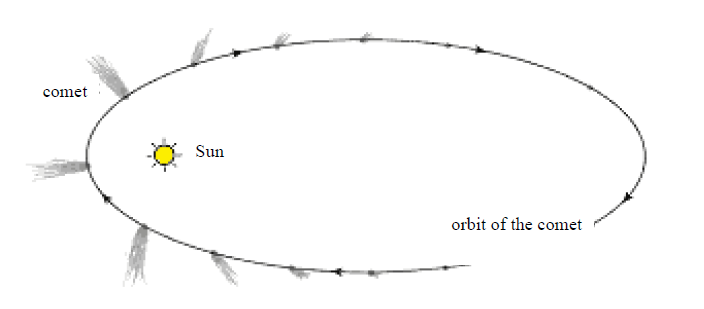Practical Exercise 1: Draw a comet and describe its main parts.
Practical Exercise: Does a comet always have a tail? Justify your answer.
Answer: A comet does not always have a tail – it forms when the comet approaches the Sun and gases and dust evaporate from its surface.
Practical Exercise: Is the comet's tail pointing to the Sun? Justify your answer.
Answer: No, it is not. The comet's tail can never point towards the Sun because it is caused
by the solar wind and the pressure of the Sun's rays. This means that if the comet moves away
from the Sun, the tail will point in front of the comet, not behind the comet.
Practical Exercise: Sketch the comet's orbit around the Sun and draw the direction of its tail.

Practical Exercise: What are the main differences between comets and minor planets?
Answer:

| Comets | Minor Planets |
| Found behind Pluto's orbit | Found between Mars and Jupiter |
| Made of ice and dust – “dirty” snowballs |
Formed by rocks |
| They have a tail | They don't have a tail |
| They usually have an elliptical orbit (long-period comets – a period of circulation over 200 years – they have an eccentricity of the orbit higher than 0.85; short-period comets have an average eccentricity of 0.5) |
They have a less eccentric orbit (98% of the numbered minor planets have an eccentricity of less than 0.3; 80% less than 0.2 and 30% less than 0.1) |


